Intelligent Embedded Systems Platform for Vehicular Cyber-Physical Systems
Abstract
1. Introduction
1.1. Intelligent Vehicular Cyber-Physical Systems
1.2. Intelligent Vehicular Cyber-Physical System Methods
- Model-Based Design: This approach involves developing mathematical models of the physical system and using them to design the control algorithms and software. The models can be simulated to assess system performance prior to implementation;
- Control Theory: Control theory is used to design control systems that regulate physical processes and maintain stability. It involves analysing the system dynamics and developing feedback control algorithms to adjust system behaviour;
- Real-Time Systems: Real-time systems ensure that a CPS responds to changes in the physical environment in a timely and predictable manner. This involves developing software that can execute in real-time and meet system timing requirements;
- Cybersecurity: Cybersecurity is essential for safeguarding CPSs from cyberattacks that can compromise their safety and reliability. CPS methods for cybersecurity include the development of secure communication protocols, intrusion detection systems, and access control mechanisms;
- Machine Learning: ML is used to develop ICPSs that can adapt to changing environments and optimise their performance. This involves training algorithms using data from sensors and other sources to make intelligent predictions and decisions.
1.3. Cyber-Physical Challenges and Technical Barriers
1.4. Field Programmable Gate Arrays
semiconductor devices that are based around a matrix of configurable logic blocks (CLBs) connected via programmable interconnects, [that] can be reprogrammed to desired application or functionality requirements after manufacturing [41].
1.5. Literature Gaps and Contributions
- Design techniques and considerations for intelligent embedded systems in ICPSs are comprehensively discussed and summarised;
- A robust FPGA-based embedded system is proposed as an exploratory development platform for ICPSs, supporting a range of hardware and software implementations for intelligent vehicular applications;
- The basic functionality of the proposed platform is validated by designing, implementing and testing a simple FPGA-based embedded system with a soft microprocessor core. This interfaces with an IMU and rotary encoder, as typical elements of a vehicular CPS, using embedded software to process the collected data and transmit the system location/orientation and encoder position to a supervisory computer whenever the encoder shaft is rotated. These data are captured and plotted in real-time by a Matlab application running on the host computer;
- The developed prototype is reviewed to discuss the suitability of a simple FPGA-based platform for educational and research endeavours concerning ICPSs and ITSs.
2. System Design and Implementation Methodologies
2.1. Design Considerations for Intelligent Vehicular Embedded Systems
2.2. Design Requirements and Objectives
2.3. Hardware Design
2.4. Sensor Interfaces and Communication Protocols
2.5. Embedded Software Design and Data Processing
2.6. Data Capture and Human Machine Interface
2.7. Implemented Prototype
3. Testing, Results and Discussion
3.1. Testing Procedure
3.2. System Validation
3.3. Prototype Accuracy
3.4. Accuracy Improvements
- Thermal compensation algorithms may be included, using the temperature sensor on board the PMOD NAV to monitor the ambient system temperature;
- Software-based timing algorithms can be replaced with interrupt-based hardware timers, thereby ensuring more accurate and consistent integration time steps;
- More complex algorithms may be used to fuse magnetometer, gyroscope and accelerometer data and obtain better position and orientation estimates. Several sensor fusion techniques have been proposed to handle this problem, often based on extended Kalman filtering [85]. Mahony and Madgwick filters [86] have also been shown to achieve good accuracy while incurring less computational overhead;
- IMU data can be fused with data obtained from other sensors [87];
- Intelligent embedded algorithms can be used to improve the estimation accuracy [88];
- If real-time data capture is not required, bi-directional digital filters can be implemented after data collection for better estimation accuracy.
3.5. Absolute 3D Positioning
3.6. Efficiency
3.7. Cybersecurity Considerations
3.8. Flexibility for ICPS Experimentation
3.9. Limitations
4. Conclusions
Author Contributions
Funding
Institutional Review Board Statement
Informed Consent Statement
Data Availability Statement
Conflicts of Interest
Abbreviations
| AAM | Advanced air mobility |
| AI | Artificial intelligence |
| AMBA | Advanced microcontroller bus architecture |
| AXI | Advanced extensible interface |
| BRAM | Block random access memory |
| CLB | Configurable logic blocks |
| CNS | Communication, navigation and surveillance |
| COTS | Commercial off-the-shelf |
| CPS | Cyber-physical system |
| DAA | Detect and avoid |
| DOF | Degree of freedom |
| EMC | Electromagnetic compatibility |
| EMI | Electromagnetic interference |
| ESD | Electrostatic discharge |
| FPGA | Field programmable gate array |
| GNSS | Global navigation satellite systems |
| GPIO | General purpose input / output |
| HDL | Hardware description language |
| HMI | Human machine interface |
| IC | Integrated circuit |
| ICPS | Intelligent cyber-physical system |
| IMU | Inertial measurement unit |
| I/O | Input/output |
| IoT | Internet of things |
| IP | Intellectual property |
| ITS | Intelligent transportation system |
| I2C | Inter-integrated circuit |
| LED | Light emitting diode |
| LFSR | Linear-feedback shift registers |
| LiDAR | Light detection and ranging |
| LoRa | Long range |
| LTE | Long-term evolution |
| ML | Machine Learning |
| PCB | Printed circuit board |
| PMOD | Peripheral module interface |
| RGB | Red-green-blue |
| RISC | Reduced instruction set computing |
| SD | Secure digital |
| SoC | System on chip |
| SPI | Serial peripheral interface |
| UART | Universal asynchronous receiver transmitter |
| UAS | Unmanned aerial system |
| USB | Universal serial bus |
| UTM | UAS traffic management |
| V2C/N | Vehicle-to-cloud/network |
| V2I | Vehicle-to-infrastructure |
| V2P | Vehicle-to-pedestrian |
| V2V | Vehicle-to-vehicle |
| Wi-Fi | Wireless fidelity |
References
- Gao, Y.; Tian, F.; Li, J.; Fang, Z.; Al-Rubaye, S.; Song, W.; Yan, Y. Joint Optimization of Depth and Ego-Motion for Intelligent Autonomous Vehicles. IEEE Trans. Intell. Transp. Syst. 2022, 1–14. [Google Scholar] [CrossRef]
- Rani, S.; Kataria, A.; Chauhan, M.; Rattan, P.; Kumar, R.; Kumar Sivaraman, A. Security and Privacy Challenges in the Deployment of Cyber-Physical Systems in Smart City Applications: State-of-Art Work. Mater. Today Proc. 2022, 62, 4671–4676. [Google Scholar] [CrossRef]
- Gunes, V.; Peter, S.; Givargis, T.; Vahid, F. A survey on concepts, applications, and challenges in Cyber-Physical Systems. KSII Trans. Internet Inf. Syst. 2014, 8, 134–159. [Google Scholar]
- Fantin Irudaya Raj, E.; Appadurai, M. Internet of Things-Based Smart Transportation System for Smart Cities. In Intelligent Systems for Social Good: Theory and Practice; Springer Nature: Singapore, 2022; pp. 39–50. [Google Scholar] [CrossRef]
- Mahrez, Z.; Sabir, E.; Badidi, E.; Saad, W.; Sadik, M. Smart Urban Mobility: When Mobility Systems Meet Smart Data. IEEE Trans. Intell. Transp. Syst. 2022, 23, 6222–6239. [Google Scholar] [CrossRef]
- Liu, S. The Business Case for Infrastructure-Vehicle Cooperative Autonomous Driving. IEEE Eng. Manag. Rev. 2022, 50, 189–194. [Google Scholar] [CrossRef]
- Pan, M.; Li, Y.; Zhang, Z.L.; Luo, J. SCCS: Smart Cloud Commuting System With Shared Autonomous Vehicles. IEEE Trans. Big Data 2022, 8, 1301–1311. [Google Scholar] [CrossRef]
- Shi, X.; Wei, H. An Embedded Vehicular Integrative Platform Based on CDMA. In Proceedings of the 2006 2nd IEEE/ASME International Conference on Mechatronics and Embedded Systems and Applications, Beijing, China, 13–16 August 2006; pp. 1–5. [Google Scholar] [CrossRef]
- Rawat, D.B.; Bajracharya, C.; Yan, G. Towards intelligent transportation Cyber-Physical Systems: Real-time computing and communications perspectives. In Proceedings of the SoutheastCon 2015, Fort Lauderdale, FL, USA, 9–12 April 2015; pp. 1–6. [Google Scholar] [CrossRef]
- Chen, L.; Li, Y.; Huang, C.; Xing, Y.; Tian, D.; Li, L.; Hu, Z.; Teng, S.; Lv, C.; Wang, J.; et al. Milestones in Autonomous Driving and Intelligent Vehicles—Part 1: Control, Computing System Design, Communication, HD Map, Testing, and Human Behaviors. IEEE Trans. Syst. Man, Cybern. Syst. 2023, 1–17. [Google Scholar] [CrossRef]
- Novak, A.; Novak Sedlackova, A.; Vochozka, M.; Popescu, G.H. Big Data-driven Governance of Smart Sustainable Intelligent Transportation Systems: Autonomous Driving Behaviors, Predictive Modeling Techniques, and Sensing and Computing Technologies. Contemp. Readings Law Soc. Justice 2022, 14, 100–117. [Google Scholar] [CrossRef]
- Kliestik, T.; Musa, H.; Machova, V.; Rice, L. Remote Sensing Data Fusion Techniques, Autonomous Vehicle Driving Perception Algorithms, and Mobility Simulation Tools in Smart Transportation Systems. Contemp. Readings Law Soc. Justice 2022, 14, 137–152. [Google Scholar] [CrossRef]
- Pan, G.; Alouini, M.S. Flying Car Transportation System: Advances, Techniques, and Challenges. IEEE Access 2021, 9, 24586–24603. [Google Scholar] [CrossRef]
- Zhou, J.; Tian, D.; Sheng, Z.; Duan, X.; Shen, X. Joint Mobility, Communication and Computation Optimization for UAVs in Air-Ground Cooperative Networks. IEEE Trans. Veh. Technol. 2021, 70, 2493–2507. [Google Scholar] [CrossRef]
- Shrestha, R.; Bajracharya, R.; Kim, S. 6G Enabled Unmanned Aerial Vehicle Traffic Management: A Perspective. IEEE Access 2021, 9, 91119–91136. [Google Scholar] [CrossRef]
- Javaid, S.; Saeed, N.; Qadir, Z.; Fahim, H.; He, B.; Song, H.; Bilal, M. Communication and Control in Collaborative UAVs: Recent Advances and Future Trends. IEEE Trans. Intell. Transp. Syst. 2023, 24, 5719–5739. [Google Scholar] [CrossRef]
- Wilson, A.N.; Kumar, A.; Jha, A.; Cenkeramaddi, L.R. Embedded Sensors, Communication Technologies, Computing Platforms and Machine Learning for UAVs: A Review. IEEE Sens. J. 2022, 22, 1807–1826. [Google Scholar] [CrossRef]
- Prag, K.; Woolway, M.; Celik, T. Toward Data-Driven Optimal Control: A Systematic Review of the Landscape. IEEE Access 2022, 10, 32190–32212. [Google Scholar] [CrossRef]
- Tantawy, A.; Abdelwahed, S.; Erradi, A. Cyber LOPA: An Integrated Approach for the Design of Dependable and Secure Cyber-Physical Systems. IEEE Trans. Reliab. 2022, 71, 1075–1091. [Google Scholar] [CrossRef]
- De Klerk, M.L.; Saha, A.K. A Comprehensive Review of Advanced Traction Motor Control Techniques Suitable for Electric Vehicle Applications. IEEE Access 2021, 9, 125080–125108. [Google Scholar] [CrossRef]
- Ding, D.; Han, Q.L.; Wang, Z.; Ge, X. A Survey on Model-Based Distributed Control and Filtering for Industrial Cyber-Physical Systems. IEEE Trans. Ind. Inform. 2019, 15, 2483–2499. [Google Scholar] [CrossRef]
- Al-Dulaimi, A.; Al-Rubaye, S.; Cosmas, J. Adaptive congestion control for mobility in cognitive radio networks. In Proceedings of the 2011 Wireless Advanced, London, UK, 20–22 June 2011; pp. 273–277. [Google Scholar] [CrossRef]
- Cogliati, D.; Falchetto, M.; Pau, D.; Roveri, M.; Viscardi, G. Intelligent cyber-physical systems for industry 4.0. In Proceedings of the 2018 First International Conference on Artificial Intelligence for Industries (AI4I), Laguna Hills, CA, USA, 26–28 September 2018; pp. 19–22. [Google Scholar]
- Shuvo, M.M.H.; Islam, S.K.; Cheng, J.; Morshed, B.I. Efficient Acceleration of Deep Learning Inference on Resource-Constrained Edge Devices: A Review. Proc. IEEE 2023, 111, 42–91. [Google Scholar] [CrossRef]
- Pundir, A.; Singh, S.; Kumar, M.; Bafila, A.; Saxena, G.J. Cyber-Physical Systems Enabled Transport Networks in Smart Cities: Challenges and Enabling Technologies of the New Mobility Era. IEEE Access 2022, 10, 16350–16364. [Google Scholar] [CrossRef]
- Xing, G.; Simplicio, M.; Pillai, A. Autonomous Vehicles: Cyber-Physical Risk on a Massive Scale; Technical Report; IEEE Transmitter: Manhattan, NY, USA, 2022. [Google Scholar]
- Wilson, P. Certifying AI for Safety Critical Aircraft Systems; Technical Report; Acubed: Sunnyvale, CA, USA, 2020. [Google Scholar]
- Qazi, S.; Khawaja, B.A.; Farooq, Q.U. IoT-Equipped and AI-Enabled Next Generation Smart Agriculture: A Critical Review, Current Challenges and Future Trends. IEEE Access 2022, 10, 21219–21235. [Google Scholar] [CrossRef]
- Demigha, S. The impact of Big Data on AI. In Proceedings of the 2020 International Conference on Computational Science and Computational Intelligence (CSCI), Las Vegas, NV, USA, 16–18 December 2020; pp. 1395–1400. [Google Scholar] [CrossRef]
- Rodrigues, R. Legal and human rights issues of AI: Gaps, challenges and vulnerabilities. J. Responsible Technol. 2020, 4, 100005. [Google Scholar] [CrossRef]
- Tran, C.N.N.; Tat, T.T.H.; Tam, V.W.Y.; Tran, D.H. Factors affecting intelligent transport systems towards a smart city: A critical review. Int. J. Constr. Manag. 2023, 23, 1982–1998. [Google Scholar] [CrossRef]
- Khairullah, S.S.; Elks, C.R. Self-repairing hardware architecture for safety-critical cyber-physical-systems. IET Cyber-Phys. Syst. Theory Appl. 2019, 5, 92–99. [Google Scholar] [CrossRef]
- Zhang, Y.; Qian, C.; Lv, J.; Liu, Y. Agent and cyber-physical system based self-organizing and self-adaptive intelligent shopfloor. IEEE Trans. Ind. Inform. 2017, 13, 737–747. [Google Scholar] [CrossRef]
- Dutt, N.; Jantsch, A.; Sarma, S. Self-aware cyber-physical systems-on-chip. In Proceedings of the 2015 IEEE/ACM International Conference on Computer-Aided Design (ICCAD), Austin, TX, USA, 2–6 November 2015; pp. 46–50. [Google Scholar] [CrossRef]
- Shakeri, R.; Al-Garadi, M.A.; Badawy, A.; Mohamed, A.; Khattab, T.; Al-Ali, A.K.; Harras, K.A.; Guizani, M. Design Challenges of Multi-UAV Systems in Cyber-Physical Applications: A Comprehensive Survey and Future Directions. IEEE Commun. Surv. Tutorials 2019, 21, 3340–3385. [Google Scholar] [CrossRef]
- Alguliyev, R.; Imamverdiyev, Y.; Sukhostat, L. Cyber-physical systems and their security issues. Comput. Ind. 2018, 100, 212–223. [Google Scholar] [CrossRef]
- Al-Mhiqani, M.N.; Ahmad, R.; Abidin, Z.Z.; Yassin, W.M.; Hassan, A.; Mohammad, A.N.; Clarke, N.L. A new taxonomy of insider threats; an initial step in understanding authorized attack. Int. J. Inf. Syst. Manag. 2018, 1, 343–359. [Google Scholar]
- Kurniawan, J.H.; Chng, S.; Cheah, L. The Social Acceptance of Autonomous Vehicles. IEEE Potentials 2021, 40, 39–44. [Google Scholar] [CrossRef]
- Pelau, C.; Dabija, D.C.; Ene, I. What makes an AI device human-like? The role of interaction quality, empathy and perceived psychological anthropomorphic characteristics in the acceptance of artificial intelligence in the service industry. Comput. Hum. Behav. 2021, 122, 106855. [Google Scholar] [CrossRef]
- Denis, A.S.; Moskolai Ngossaha, J.; Ari, A. Cyber-Physical Urban Mobility Systems: Opportunities and Challenges in Developing Countries. Int. J. Softw. Innov. 2023, 11, 1–21. [Google Scholar] [CrossRef]
- Xilinx. What is an FPGA? Available online: https://www.xilinx.com/products/silicon-devices/fpga/what-is-an-fpga.html (accessed on 10 April 2023).
- Boutros, A.; Betz, V. FPGA Architecture: Principles and Progression. IEEE Circuits Syst. Mag. 2021, 21, 4–29. [Google Scholar] [CrossRef]
- Magyari, A.; Chen, Y. Review of state-of-the-art FPGA applications in IOT Networks. Sensors 2022, 22, 19. [Google Scholar] [CrossRef]
- Chakraborty, A.; Kar, A.K. Swarm Intelligence: A Review of Algorithms. In Nature-Inspired Computing and Optimization; Springer: Berlin/Heidelberg, Germany, 2017. [Google Scholar] [CrossRef]
- Steghöfer, J.P.; Kiefhaber, R.; Bee, K.; Bernard, Y.; Klejnowski, L.; Reif, W.; Ungerer, T.; André, E.; Hähner, J.; Müller-Schloer, C. Trustworthy Organic Computing Systems: Challenges and Perspectives. In Autonomic and Trusted Computing, Proceedings of the 7th International Conference, ATC 2010, Xi’an, China, 26–29 October 2010; Springer: Berlin/Heidelberg, Germany, 2010. [Google Scholar] [CrossRef]
- Nguyen, T.T.; Nguyen, N.D.; Nahavandi, S. Deep Reinforcement Learning for Multiagent Systems: A review of challenges, solutions, and applications. IEEE Trans. Cybern. 2020, 50, 3826–3839. [Google Scholar] [CrossRef]
- Handayani, K.; Anugrah, P. Assessing the implications of net-zero emissions pathways: An analysis of the Indonesian power sector. In Proceedings of the 2021 International Conference on Technology and Policy in Energy and Electric Power (ICT-PEP), Jakarta, Indonesia, 29–30 September 2021; pp. 270–275. [Google Scholar] [CrossRef]
- Tomar, D.; Tomar, P. Integration of Cloud Computing and Big Data Technology for Smart Generation. In Proceedings of the 2018 8th International Conference on Cloud Computing, Data Science & Engineering (Confluence), Noida, India, 11–12 January 2018; pp. 1–6. [Google Scholar] [CrossRef]
- Al-Rubaye, S.; Rodriguez, J.; Fragonara, L.Z.; Theron, P.; Tsourdos, A. Unleash Narrowband Technologies for Industrial Internet of Things Services. IEEE Netw. 2019, 33, 16–22. [Google Scholar] [CrossRef]
- Gopalakrishnan, S.K.; Al-Rubaye, S.; Inalhan, G. Adaptive UAV Swarm Mission Planning by Temporal Difference Learning. In Proceedings of the 2021 IEEE/AIAA 40th Digital Avionics Systems Conference (DASC), San Antonio, TX, USA, 3–7 October 2021; pp. 1–10. [Google Scholar] [CrossRef]
- Aloseel, A.; Al-Rubaye, S.; Zolotas, A.; Shaw, C. Attack-Detection Architectural Framework Based on Anomalous Patterns of System Performance and Resource Utilization—Part II. IEEE Access 2021, 9, 87611–87629. [Google Scholar] [CrossRef]
- Mohamed, M.A.; Kardas, G.; Challenger, M. Model-Driven Engineering Tools and Languages for Cyber-Physical Systems–A Systematic Literature Review. IEEE Access 2021, 9, 48605–48630. [Google Scholar] [CrossRef]
- Escobar, L.; Moyano, C.; Aguirre, G.; Guerra, G.; Allauca, L.; Loza, D. Multi-robot platform with features of Cyber-physical systems for education applications. In Proceedings of the 2020 IEEE ANDESCON, Quito, Ecuador, 13–16 October 2020; pp. 1–6. [Google Scholar] [CrossRef]
- Lee, E.A. Cyber Physical Systems: Design Challenges. In Proceedings of the 2008 11th IEEE International Symposium on Object and Component-Oriented Real-Time Distributed Computing (ISORC), Orlando, FL, USA, 5–7 May 2008; pp. 363–369. [Google Scholar] [CrossRef]
- Khaitan, S.K.; McCalley, J.D. Design Techniques and Applications of Cyberphysical Systems: A Survey. IEEE Syst. J. 2015, 9, 350–365. [Google Scholar] [CrossRef]
- Segura, M.; Poggi, T.; Barcena, R. A Generic Interface for x-in-the-Loop Simulations Based on Distributed Co-Simulation Protocol. IEEE Access 2023, 11, 5578–5595. [Google Scholar] [CrossRef]
- Hubert, H.; Stabernack, B. Profiling-Based Hardware/Software Co-Exploration for the Design of Video Coding Architectures. IEEE Trans. Circuits Syst. Video Technol. 2009, 19, 1680–1691. [Google Scholar] [CrossRef]
- Luyan, W.; Zhangguo, S.; Long, C. The performance analysis for embedded systems using statistics methods. Telkomnika Indones. J. Electr. Eng. 2013, 11, 4099–4103. [Google Scholar] [CrossRef]
- Bijjahalli, S.; Sabatini, R. A High-Integrity and Low-Cost Navigation System for Autonomous Vehicles. IEEE Trans. Intell. Transp. Syst. 2021, 22, 356–369. [Google Scholar] [CrossRef]
- Namuduri, K.; Fiebig, U.C.; Matolak, D.W.; Guvenc, I.; Hari, K.; Määttänen, H.L. Advanced Air Mobility: Research Directions for Communications, Navigation, and Surveillance. IEEE Veh. Technol. Mag. 2022, 17, 65–73. [Google Scholar] [CrossRef]
- Schmitz, M.T.; Al-Hashimi, B.M.; Eles, P. System-Level Design Techniques for Energy-Efficient Embedded Systems, 1st ed.; Springer: New York, NY, USA, 2006. [Google Scholar] [CrossRef]
- Swaminathan, N.; Reddy, S.R.P.; RajaShekara, K.; Haran, K.S. Flying Cars and eVTOLs—Technology Advancements, Powertrain Architectures, and Design. IEEE Trans. Transp. Electrif. 2022, 8, 4105–4117. [Google Scholar] [CrossRef]
- Panda, P.R.; Catthoor, F.; Dutt, N.D.; Danckaert, K.; Brockmeyer, E.; Kulkarni, C.; Vandercappelle, A.; Kjeldsberg, P.G. Data and memory optimization techniques for embedded systems. ACM Trans. Des. Autom. Electron. Syst. 2001, 6, 149–206. [Google Scholar] [CrossRef]
- Timilsina, L.; Badr, P.R.; Hoang, P.H.; Ozkan, G.; Papari, B.; Edrington, C.S. Battery Degradation in Electric and Hybrid Electric Vehicles: A Survey Study. IEEE Access 2023, 11, 42431–42462. [Google Scholar] [CrossRef]
- Zhang, D.; Zhou, X.; Cheng, E.; Wan, H.; Chen, Y. Investigation on Effects of HPM Pulse on UAV’s Datalink. IEEE Trans. Electromagn. Compat. 2020, 62, 829–839. [Google Scholar] [CrossRef]
- Arandhakar, S.; Jayaram, N.; Shankar, Y.R.; Gaurav.; Kishore, P.S.V.; Halder, S. Emerging Intelligent Bidirectional Charging Strategy Based on Recurrent Neural Network Accosting EMI and Temperature Effects for Electric Vehicle. IEEE Access 2022, 10, 121741–121761. [Google Scholar] [CrossRef]
- Shen, Q.; Yue, C.; Goh, C.H.; Wang, D. Active fault-tolerant control system design for spacecraft attitude maneuvers with actuator saturation and faults. IEEE Trans. Ind. Electron. 2019, 66, 3763–3772. [Google Scholar] [CrossRef]
- Sharma, P.; Gillanders, J. Cybersecurity and Forensics in Connected Autonomous Vehicles: A Review of the State-of-the-Art. IEEE Access 2022, 10, 108979–108996. [Google Scholar] [CrossRef]
- Kukkala, V.K.; Thiruloga, S.V.; Pasricha, S. Roadmap for Cybersecurity in Autonomous Vehicles. IEEE Consum. Electron. Mag. 2022, 11, 13–23. [Google Scholar] [CrossRef]
- Khan, W.Z.; Khan, M.K.; Arshad, Q.u.A. Cybersecurity Digital Labels for Connected and Autonomous Vehicles. IEEE Consum. Electron. Mag. 2023, 12, 87–93. [Google Scholar] [CrossRef]
- Choi, E.; Song, H.; Kang, S.; Choi, J.W. High-Speed, Low-Latency In-Vehicle Network Based on the Bus Topology for Autonomous Vehicles: Automotive Networking and Applications. IEEE Veh. Technol. Mag. 2022, 17, 74–84. [Google Scholar] [CrossRef]
- Yassine, A.; Souweid, S. Time-to-Market and Product Performance Tradeoff Revisited. IEEE Trans. Eng. Manag. 2021, 1–16. [Google Scholar] [CrossRef]
- Tan, Z.; Dai, N.; Su, Y.; Zhang, R.; Li, Y.; Wu, D.; Li, S. Human–Machine Interaction in Intelligent and Connected Vehicles: A Review of Status Quo, Issues, and Opportunities. IEEE Trans. Intell. Transp. Syst. 2022, 23, 13954–13975. [Google Scholar] [CrossRef]
- Mizutani, K.; Yamaguchi, H.; Urino, Y.; Koibuchi, M. OPTWEB: A Lightweight Fully Connected Inter-FPGA Network for Efficient Collectives. IEEE Trans. Comput. 2021, 70, 849–862. [Google Scholar] [CrossRef]
- Khairullah, S.S. Realization of a 16-bit MIPS RISC pipeline processor. In Proceedings of the 2022 International Congress on Human-Computer Interaction, Optimization and Robotic Applications (HORA), Ankara, Turkey, 9–11 June 2022; pp. 1–6. [Google Scholar] [CrossRef]
- Monmasson, E.; Cirstea, M.N. FPGA Design Methodology for Industrial Control Systems—A Review. IEEE Trans. Ind. Electron. 2007, 54, 1824–1842. [Google Scholar] [CrossRef]
- Chen, J.; Huang, S. Analysis and Comparison of UART, SPI and I2C. In Proceedings of the 2023 IEEE 2nd International Conference on Electrical Engineering, Big Data and Algorithms (EEBDA), Changchun, China, 24–26 February 2023; pp. 272–276. [Google Scholar] [CrossRef]
- Trinh, X.D.; Le, M.C.; Huy, T. IMU Calibration Methods and Orientation Estimation Using Extended Kalman Filters. In AETA 2019—Recent Advances in Electrical Engineering and Related Sciences: Theory and Application; Springer International Publishing: Berlin/Heidelberg, Germany, 2021; pp. 541–551. [Google Scholar] [CrossRef]
- NXP. AN3397—Implementing Positioning Algorithms Using Accelerometers—NXP. 2007. Available online: https://www.nxp.com/docs/en/application-note/AN3397.pdf (accessed on 1 April 2023).
- Zhou, X.; Gou, X.; Huang, T.; Yang, S. Review on Testing of Cyber Physical Systems: Methods and Testbeds. IEEE Access 2018, 6, 52179–52194. [Google Scholar] [CrossRef]
- Allouis, E.; Blake, R.; Gunes-Lasnet, S.; Jorden, T.; Maddison, B.; Schroeven-Deceuninck, H.; Stuttard, M.; Truss, P.; Ward, K.; Ward, R.; et al. A Facility for the Verification and Validation of Robotics and Autonomy for Planetary Exploration. In Proceedings of the 44th Annual Lunar and Planetary Science Conference, The Woodlands, TX, USA, 18–22 March 2013. [Google Scholar]
- Deshmukh, J.V.; Horvat, M.; Jin, X.; Majumdar, R.; Prabhu, V.S. Testing cyber-physical systems through Bayesian optimization. ACM Trans. Embed. Comput. Syst. 2017, 16, 1–18. [Google Scholar] [CrossRef]
- Zheng, X.; Julien, C.; Kim, M.; Khurshid, S. Perceptions on the State of the Art in Verification and Validation in Cyber-Physical Systems. IEEE Syst. J. 2017, 11, 2614–2627. [Google Scholar] [CrossRef]
- Naufal, J.K.; Camargo, J.B.; Vismari, L.F.; de Almeida, J.R.; Molina, C.; González, R.I.R.; Inam, R.; Fersman, E. A2CPS: A Vehicle-Centric Safety Conceptual Framework for Autonomous Transport Systems. IEEE Trans. Intell. Transp. Syst. 2018, 19, 1925–1939. [Google Scholar] [CrossRef]
- Kownacki, C. Optimization approach to adapt Kalman filters for the real-time application of accelerometer and gyroscope signals’ filtering. Digit. Signal Process. 2011, 21, 131–140. [Google Scholar] [CrossRef]
- Ludwig, S.A.; Burnham, K.D. Comparison of Euler Estimate using Extended Kalman Filter, Madgwick and Mahony on Quadcopter Flight Data. In Proceedings of the 2018 International Conference on Unmanned Aircraft Systems (ICUAS), Dallas, TX, USA, 12–15 June 2018; pp. 1236–1241. [Google Scholar] [CrossRef]
- Zhang, P.; Gu, J.; Milios, E.E.; Huynh, P. Navigation with IMU/GPS/digital compass with unscented Kalman filter. In Proceedings of the IEEE International Conference Mechatronics and Automation, Niagara Falls, ON, Canada, 29 July–1 August 2005; Volume 3, pp. 1497–1502. [Google Scholar]
- Steinbrener, J.; Brommer, C.; Jantos, T.; Fornasier, A.; Weiss, S. Improved state propagation through AI-based pre-processing and down-sampling of high-speed inertial data. In Proceedings of the 2022 International Conference on Robotics and Automation (ICRA), Philadelphia, PA, USA, 23–27 May 2022; pp. 6084–6090. [Google Scholar]
- Patel, U.N.; Faruque, I.A. Multi-IMU Based Alternate Navigation Frameworks: Performance & Comparison for UAS. IEEE Access 2022, 10, 17565–17577. [Google Scholar] [CrossRef]
- Seng, K.P.; Lee, P.J.; Ang, L.M. Embedded Intelligence on FPGA: Survey, Applications and Challenges. Electronics 2021, 10, 895. [Google Scholar] [CrossRef]
- Datta, D.; Datta, B.; Dutta, H.S. Design and implementation of multibit LFSR on FPGA to generate pseudorandom sequence number. In Proceedings of the 2017 Devices for Integrated Circuit (DevIC), Kalyani, India, 23–24 March 2017; pp. 346–349. [Google Scholar] [CrossRef]
- Sharma, D.K.; Singh, N.C.; Noola, D.A.; Doss, A.N.; Sivakumar, J. A review on various cryptographic techniques & algorithms. Mater. Today Proc. 2022, 51, 104–109. [Google Scholar] [CrossRef]
- Sohal, M.; Sharma, S. BDNA-a DNA inspired symmetric key cryptographic technique to secure cloud computing. J. King Saud Univ.—Comput. Inf. Sci. 2022, 34, 1417–1425. [Google Scholar] [CrossRef]
- Qian, Y.; Feng, Y.; Chen, H.H. Cryptographic techniques. In Security in Wireless Communication Networks; John Wiley and Sons, Ltd.: Chichester, UK, 2022; pp. 51–76. [Google Scholar]
- Zhang, J.; Prabakar, K.; Hasandka, A.; Alam, S.M.S.; Jiang, Y.; Hodge, B.M.; Gao, D.W. Power and Communications Hardware-In-the-Loop CPS Architecture and Platform for DER Monitoring and Control Applications. In Proceedings of the 2021 IEEE International Conference on Communications, Control, and Computing Technologies for Smart Grids (SmartGridComm), Aachen, Germany, 25–28 October 2021; pp. 170–174. [Google Scholar] [CrossRef]
- García, M.V.; Pérez, F.; Calvo, I.; Morán, G. Building industrial CPS with the IEC 61499 standard on low-cost hardware platforms. In Proceedings of the 2014 IEEE Emerging Technology and Factory Automation (ETFA), Barcelona, Spain, 16–19 September 2014; pp. 1–4. [Google Scholar] [CrossRef]
- Isakovic, H.; Ratasich, D.; Hirsch, C.; Platzer, M.; Wally, B.; Rausch, T.; Nickovic, D.; Krenn, W.; Kappel, G.; Dustdar, S.; et al. CPS/IoT Ecosystem: A platform for research and education. In Cyber Physical Systems. Model-Based Design, Proceedings of the 8th International Workshop, CyPhy 2018, and 14th International Workshop, WESE 2018, Turin, Italy, 4–5 October 2018; Springer International Publishing: Berlin/Heidelberg, Germany, 2019; pp. 206–213. [Google Scholar]
- Landolfi, G.; Barni, A.; Menato, S.; Cavadini, F.A.; Rovere, D.; Dal Maso, G. Design of a multi-sided platform supporting CPS deployment in the automation market. In Proceedings of the 2018 IEEE Industrial Cyber-Physical Systems (ICPS), St. Petersburg, Russia, 15–18 May 2018; pp. 684–689. [Google Scholar] [CrossRef]
- Schmittle, M.; Lukina, A.; Vacek, L.; Das, J.; Buskirk, C.P.; Rees, S.; Sztipanovits, J.; Grosu, R.; Kumar, V. OpenUAV: A UAV Testbed for the CPS and Robotics Community. In Proceedings of the 2018 ACM/IEEE 9th International Conference on Cyber-Physical Systems (ICCPS), Porto, Portugal, 11–13 April 2018; pp. 130–139. [Google Scholar] [CrossRef]
- Iannino, V.; Colla, V.; Denker, J.; Göttsche, M. A CPS-Based Simulation Platform for Long Production Factories. Metals 2019, 9, 1025. [Google Scholar] [CrossRef]
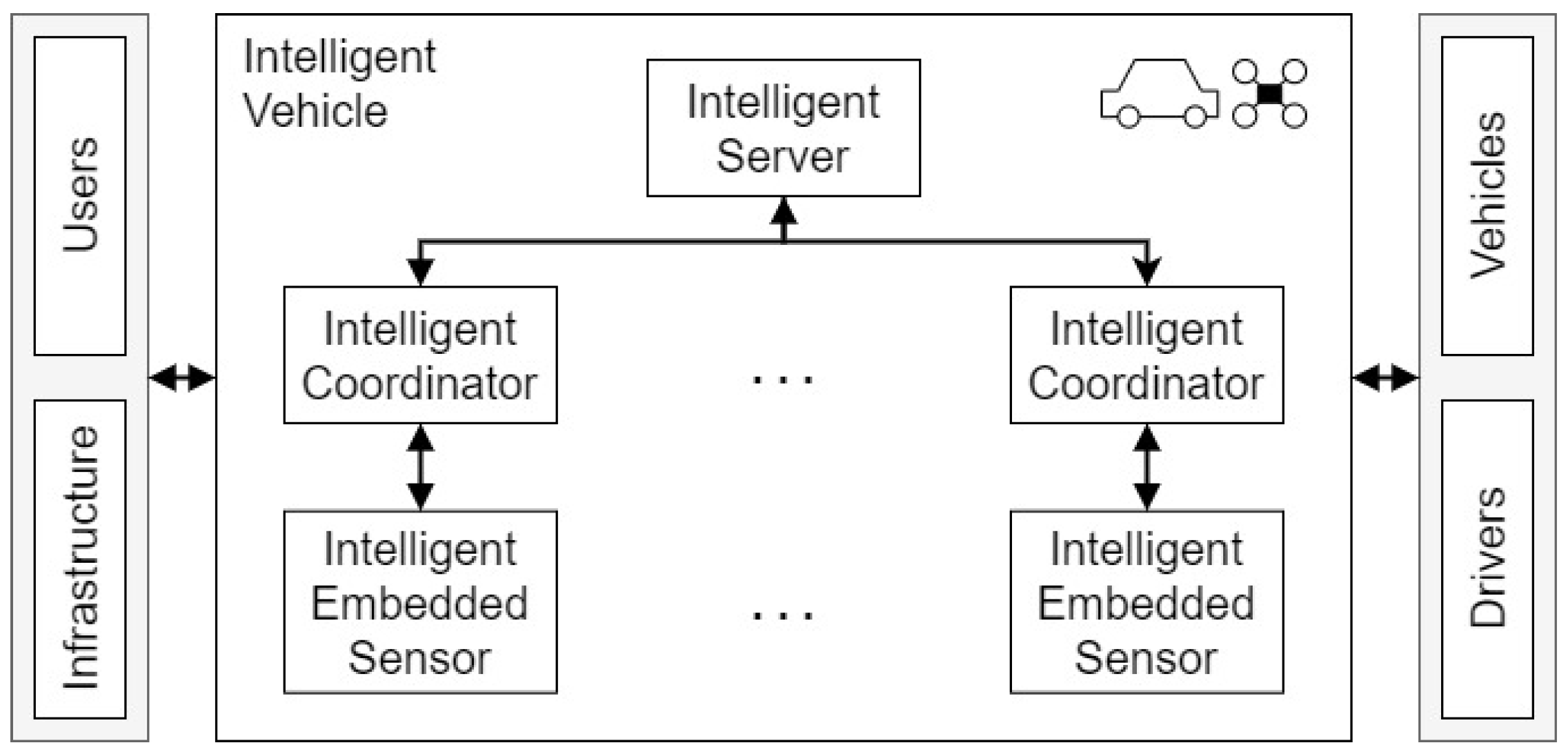

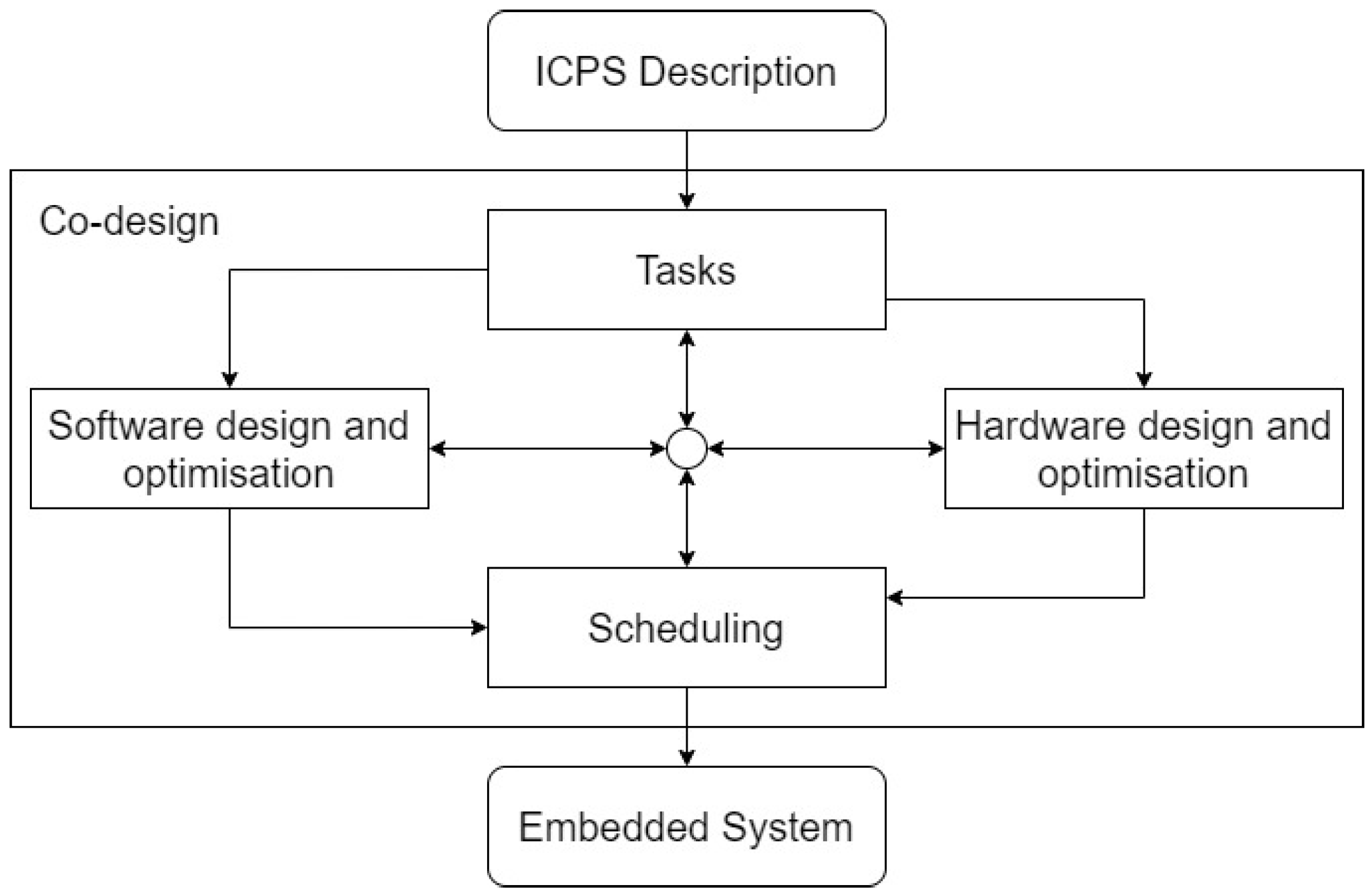

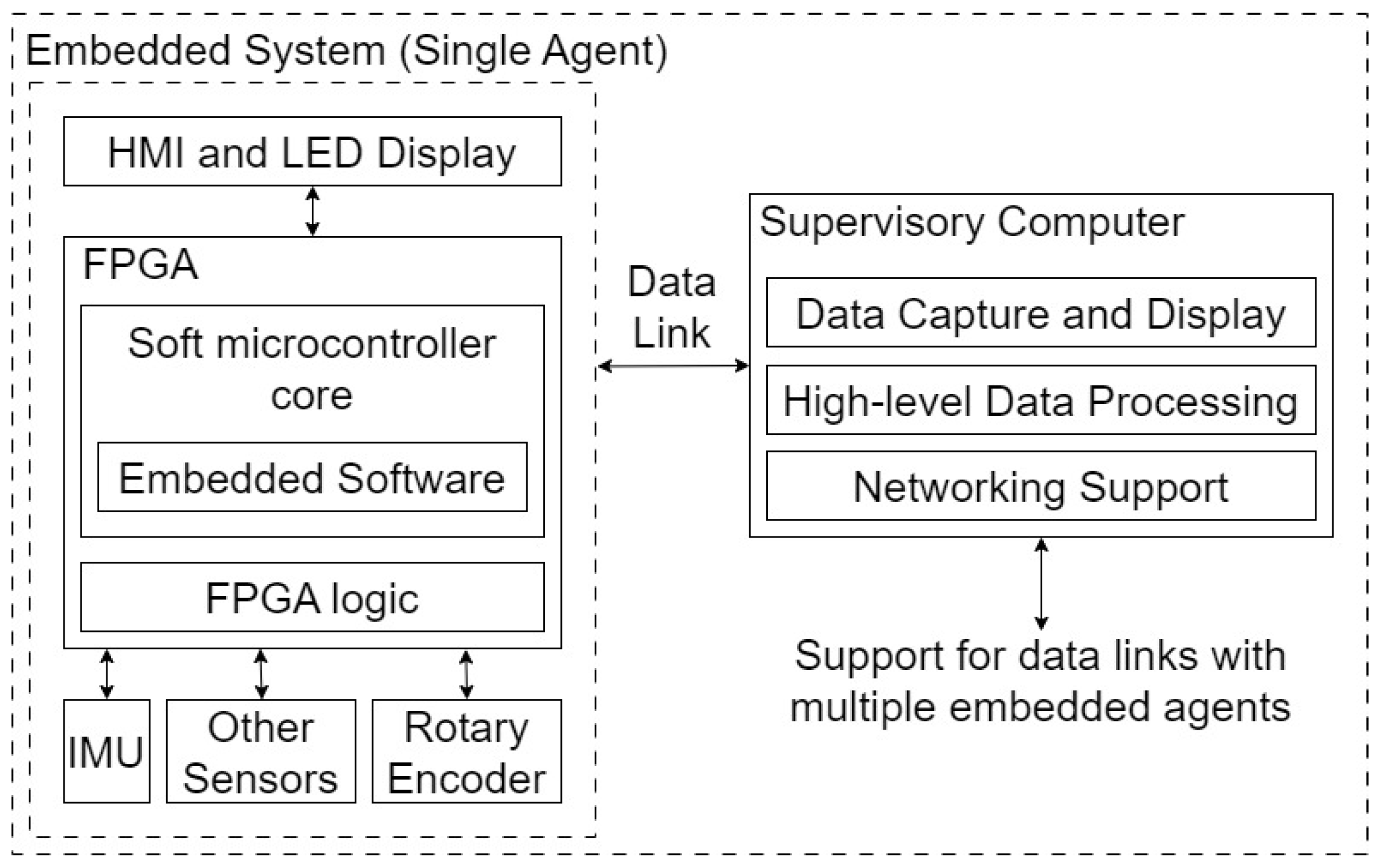
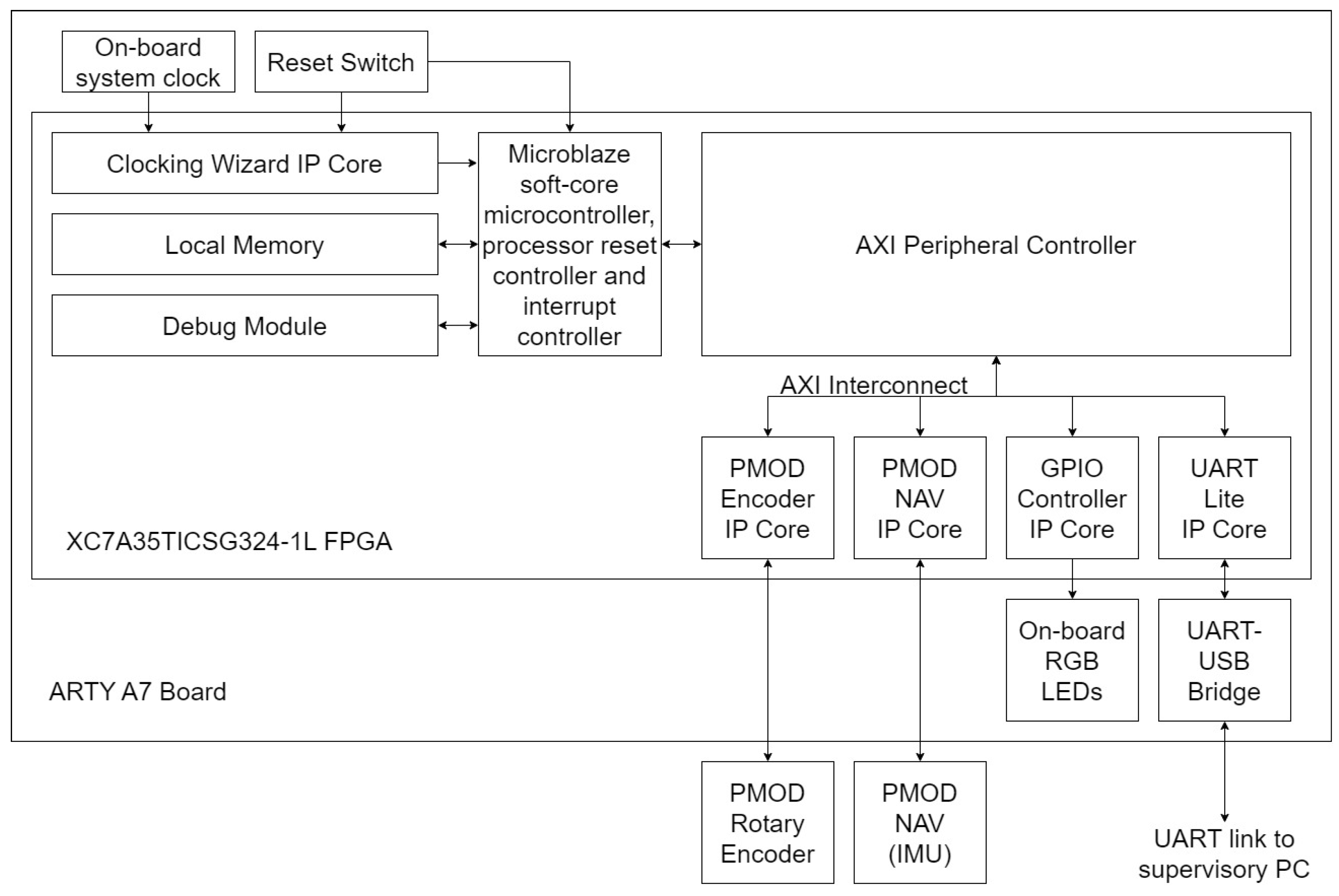
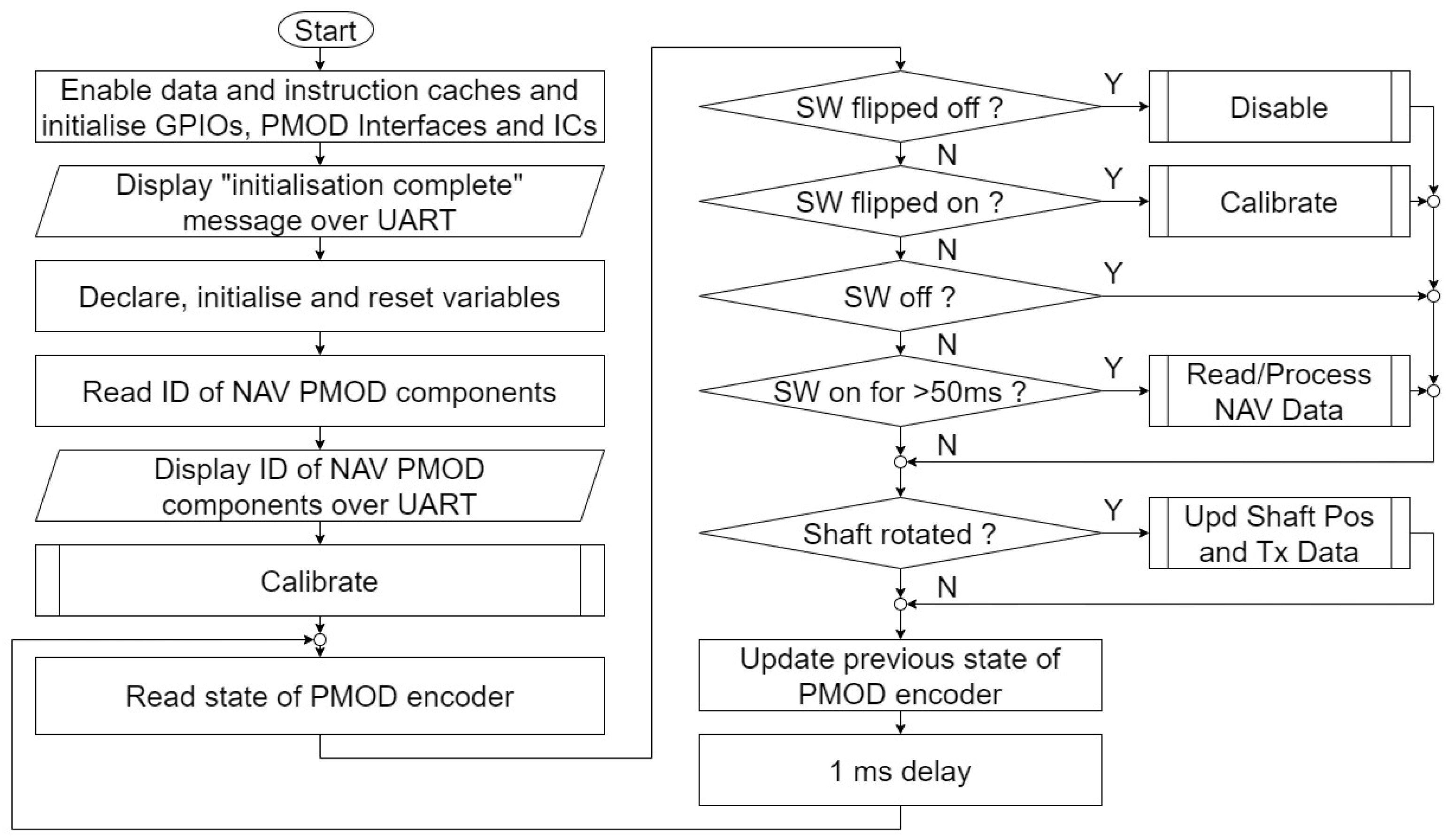
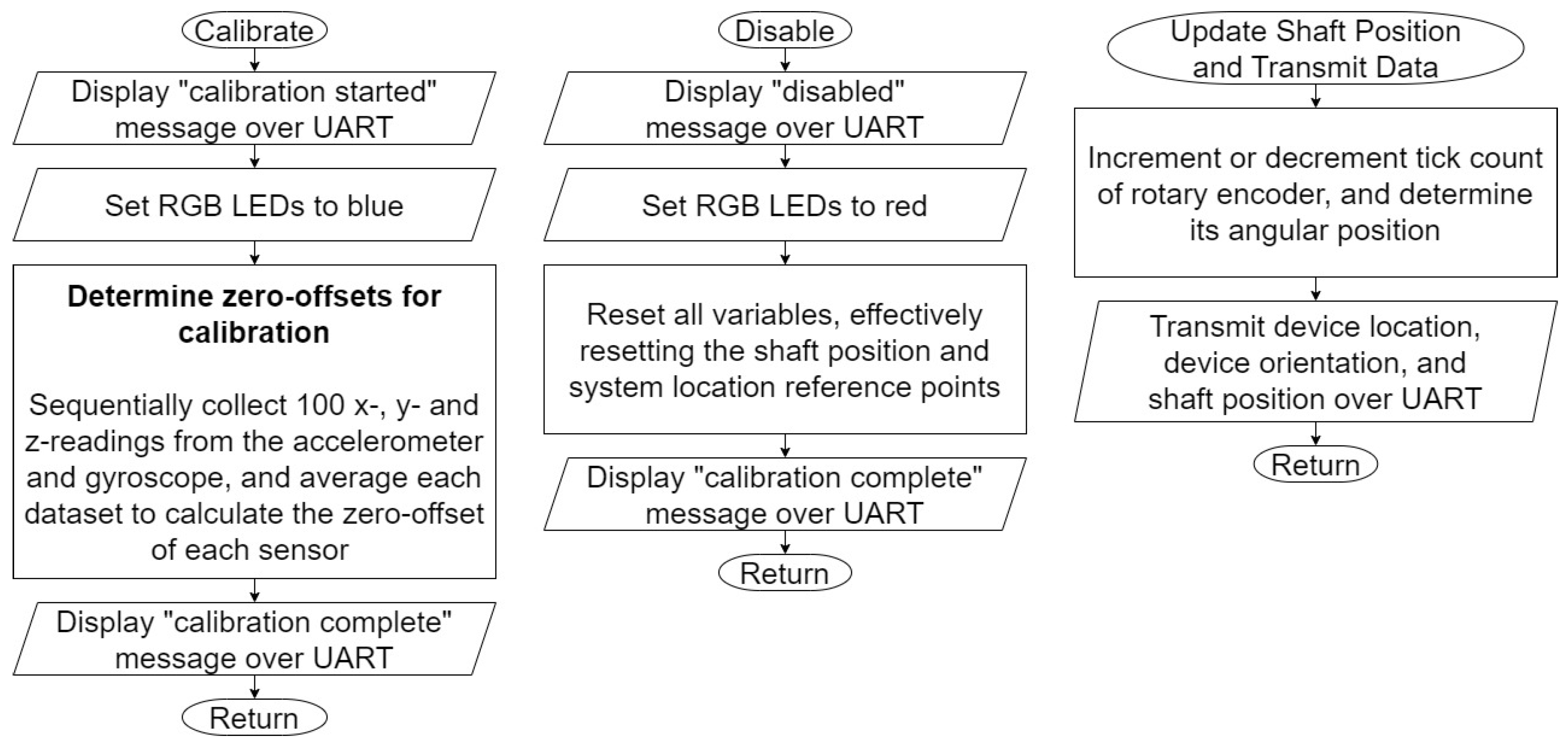
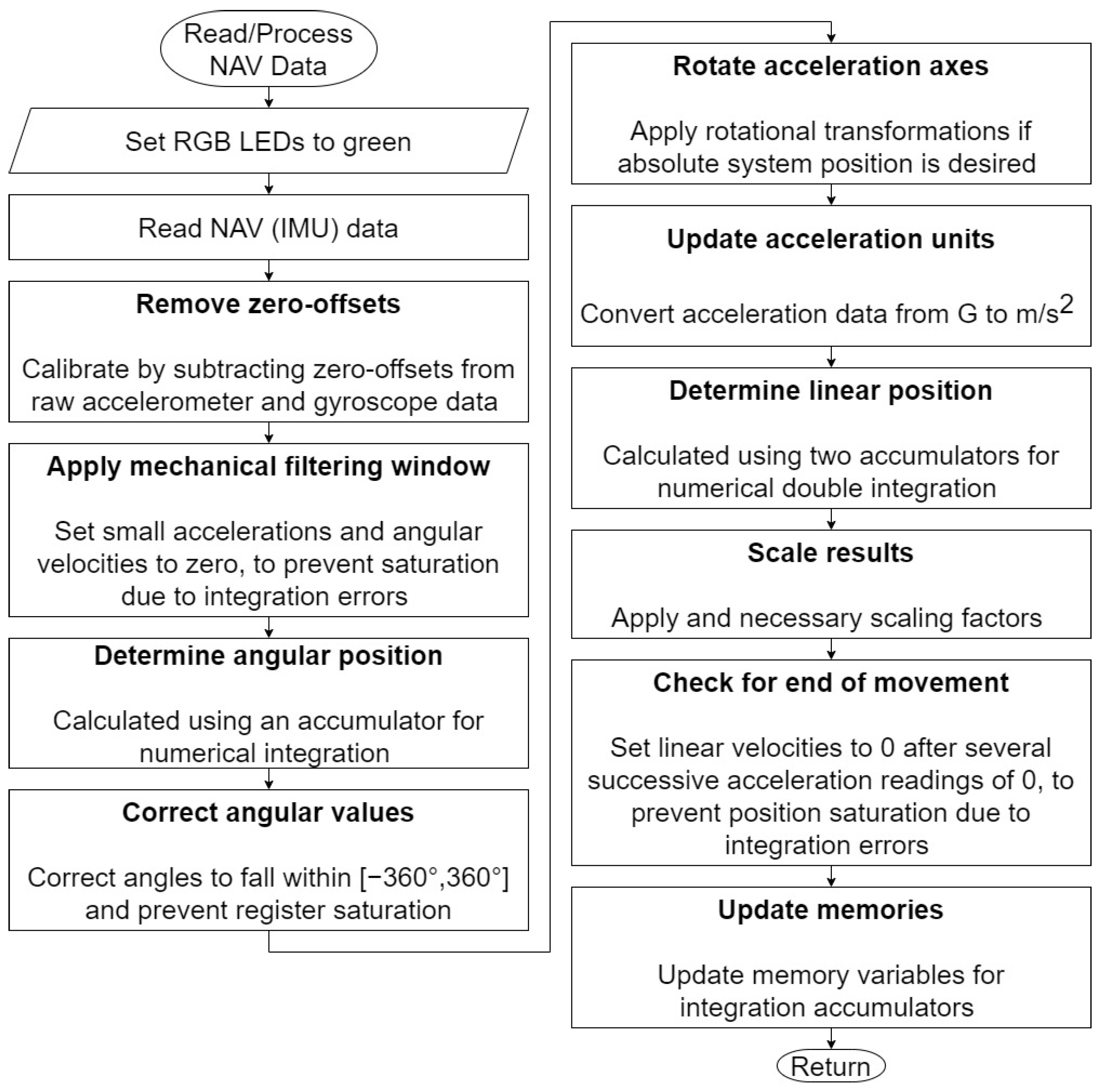





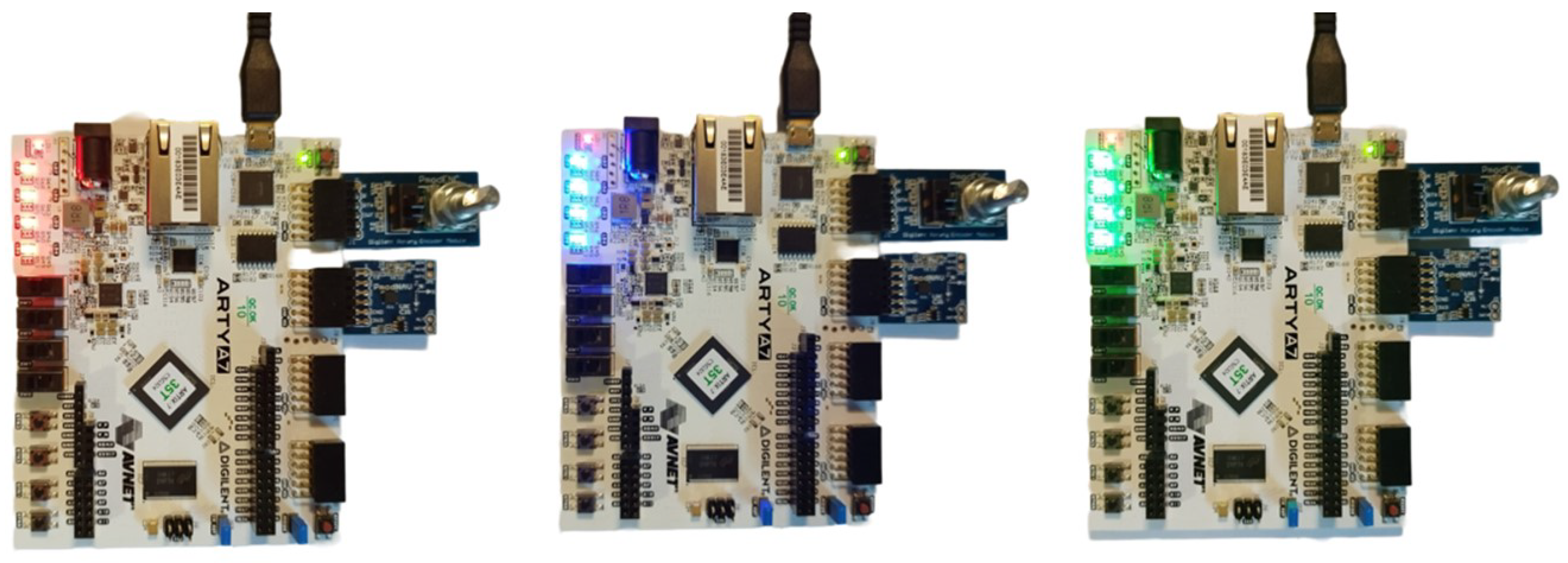

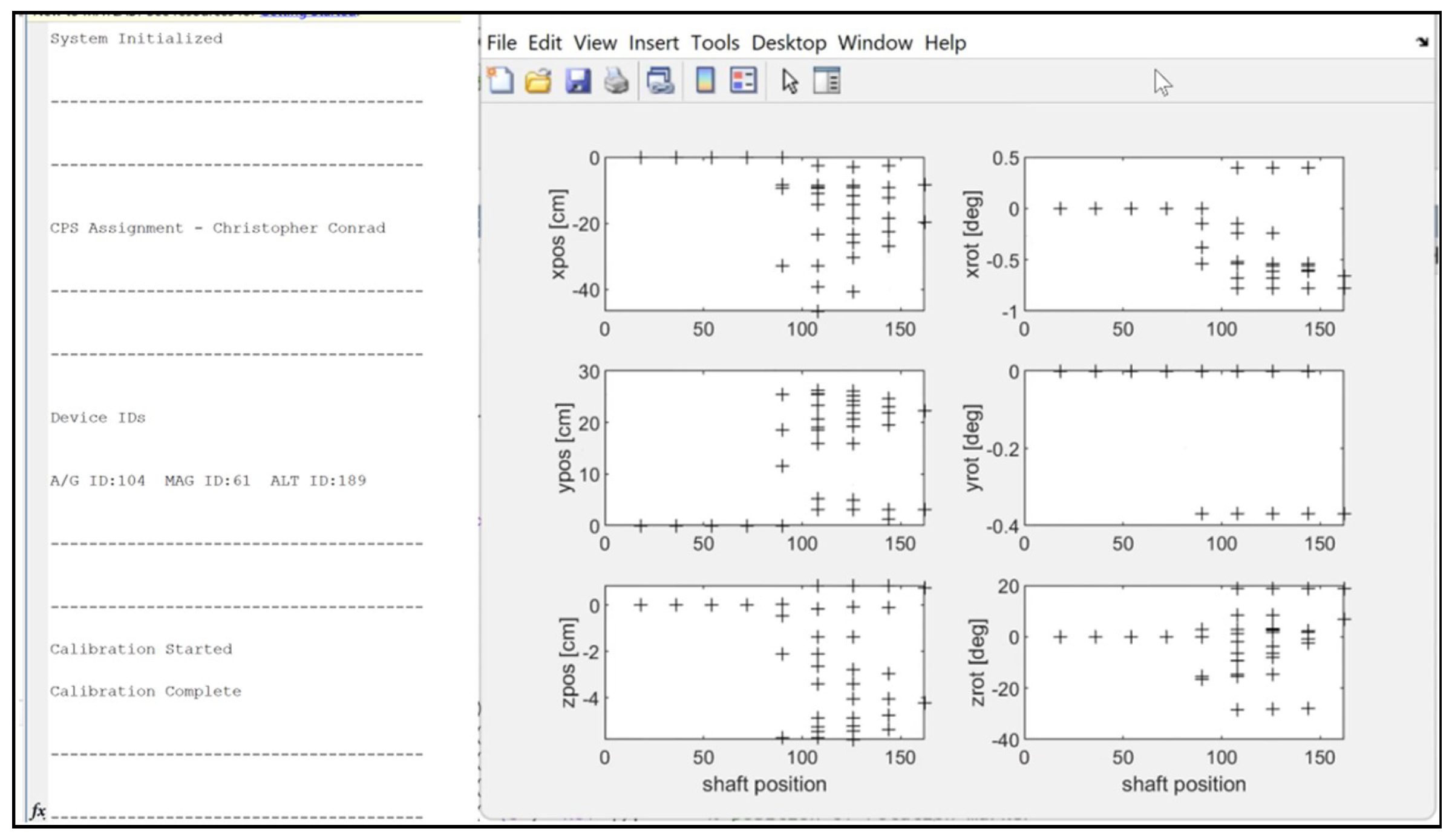

| Feature | UART | SPI | I2C | Ethernet |
|---|---|---|---|---|
| Data rate | <460 kbps | <20 Mbps | <1 Mbps | >1 Gbps |
| Type of communication | Asynchronous | Synchronous | Synchronous | Synchronous |
| Hardware complexity | Low | Moderate | Moderate | High |
| Benefits | Simple and widely supported | Full duplex communication and low power consumption | Supports multiple masters and only needs a two-line bus | Good quality and high data rates over long distances |
| Disadvantages | Restricted to two devices at a pre-defined data rate | Requires a large number of connections for multiple slaves | Half duplex communication with low overhead | Performs poorly in high data traffic and is non-deterministic |
Disclaimer/Publisher’s Note: The statements, opinions and data contained in all publications are solely those of the individual author(s) and contributor(s) and not of MDPI and/or the editor(s). MDPI and/or the editor(s) disclaim responsibility for any injury to people or property resulting from any ideas, methods, instructions or products referred to in the content. |
© 2023 by the authors. Licensee MDPI, Basel, Switzerland. This article is an open access article distributed under the terms and conditions of the Creative Commons Attribution (CC BY) license (https://creativecommons.org/licenses/by/4.0/).
Share and Cite
Conrad, C.; Al-Rubaye, S.; Tsourdos, A. Intelligent Embedded Systems Platform for Vehicular Cyber-Physical Systems. Electronics 2023, 12, 2908. https://doi.org/10.3390/electronics12132908
Conrad C, Al-Rubaye S, Tsourdos A. Intelligent Embedded Systems Platform for Vehicular Cyber-Physical Systems. Electronics. 2023; 12(13):2908. https://doi.org/10.3390/electronics12132908
Chicago/Turabian StyleConrad, Christopher, Saba Al-Rubaye, and Antonios Tsourdos. 2023. "Intelligent Embedded Systems Platform for Vehicular Cyber-Physical Systems" Electronics 12, no. 13: 2908. https://doi.org/10.3390/electronics12132908
APA StyleConrad, C., Al-Rubaye, S., & Tsourdos, A. (2023). Intelligent Embedded Systems Platform for Vehicular Cyber-Physical Systems. Electronics, 12(13), 2908. https://doi.org/10.3390/electronics12132908








